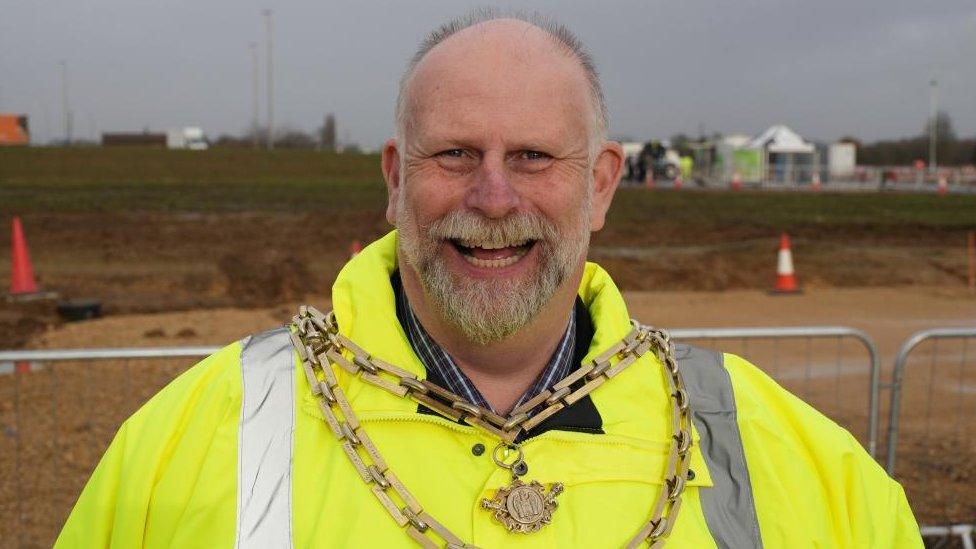Dig finds 'industrial scale' Roman engineering fail
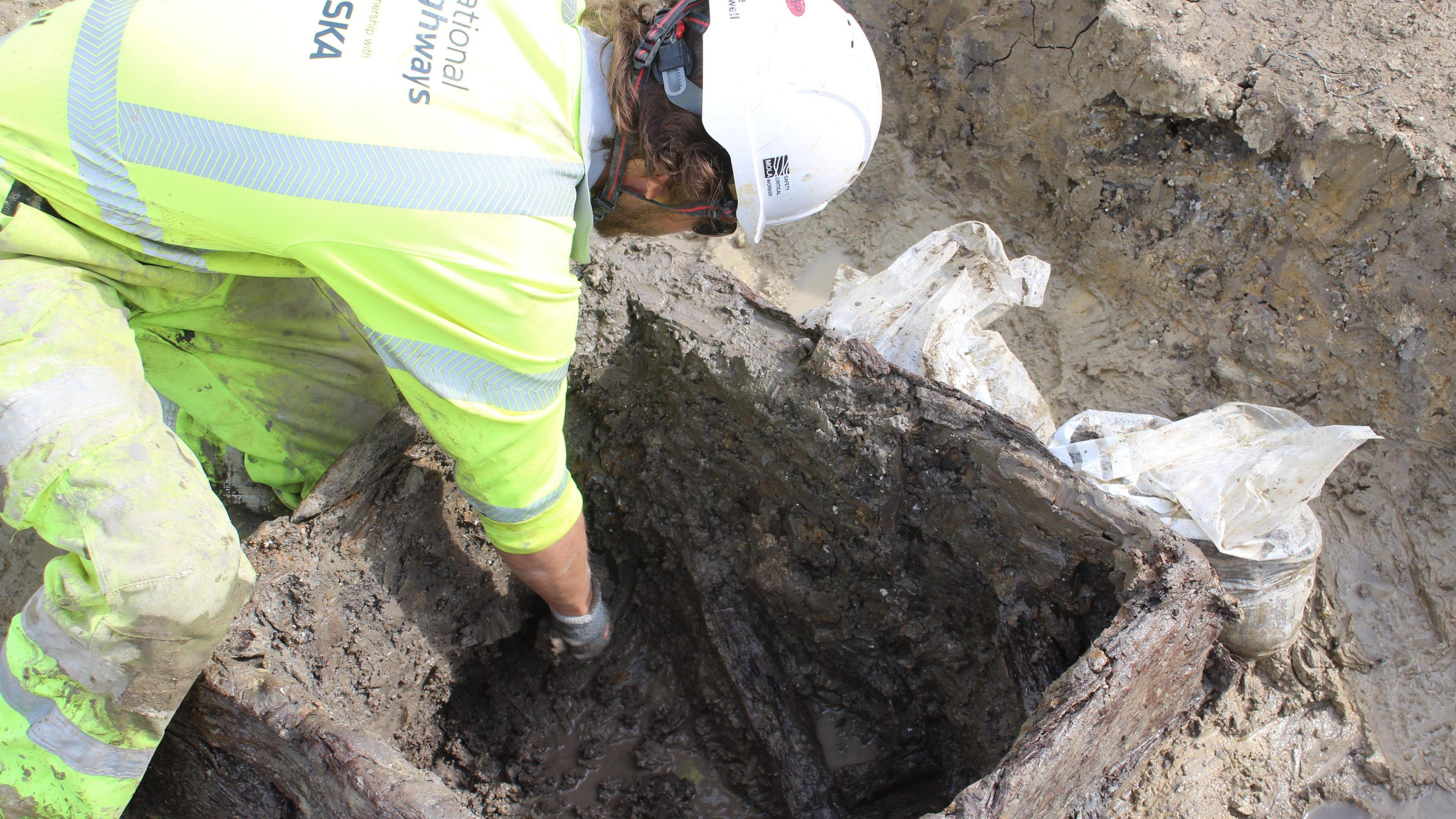
Archaeologists discovered two deep wells at the site
- Published
Wooden remains of two Roman wells - one of which had collapsed before it could even be used - have revealed "a failure of Roman engineering on an industrial scale", an archaeologist said.
The finds, including off-cuts from a carpentry workshop and the remains of an almost 2,000-year-old ladder, were made at a dig at the National Highways work on the A428 Black Cat to Caxton Gibbet road on the Cambridgeshire-Bedfordshire border.
Project manager Simon Markus, from the Museum of London Archaeology (MOLA) team said after the first well, dated AD43 to 410, collapsed, the settlers learned from their mistakes.
The team found additional steps were taken to secure the second well and prevent another cave-in.
The team said the "astonishingly preserved wooden elements revealed the secrets" of the wells' construction.
"These helped fuel the expansion of a settlement that began as a quiet farmstead in the Middle Iron Age (about 350 BC) but was transformed into a hive of industrial activity during the early Roman period (AD43 to 150)."
The site showed evidence of Romano-British metalworking, carpentry, and woodworking all taking place inside a large, gated enclosure.
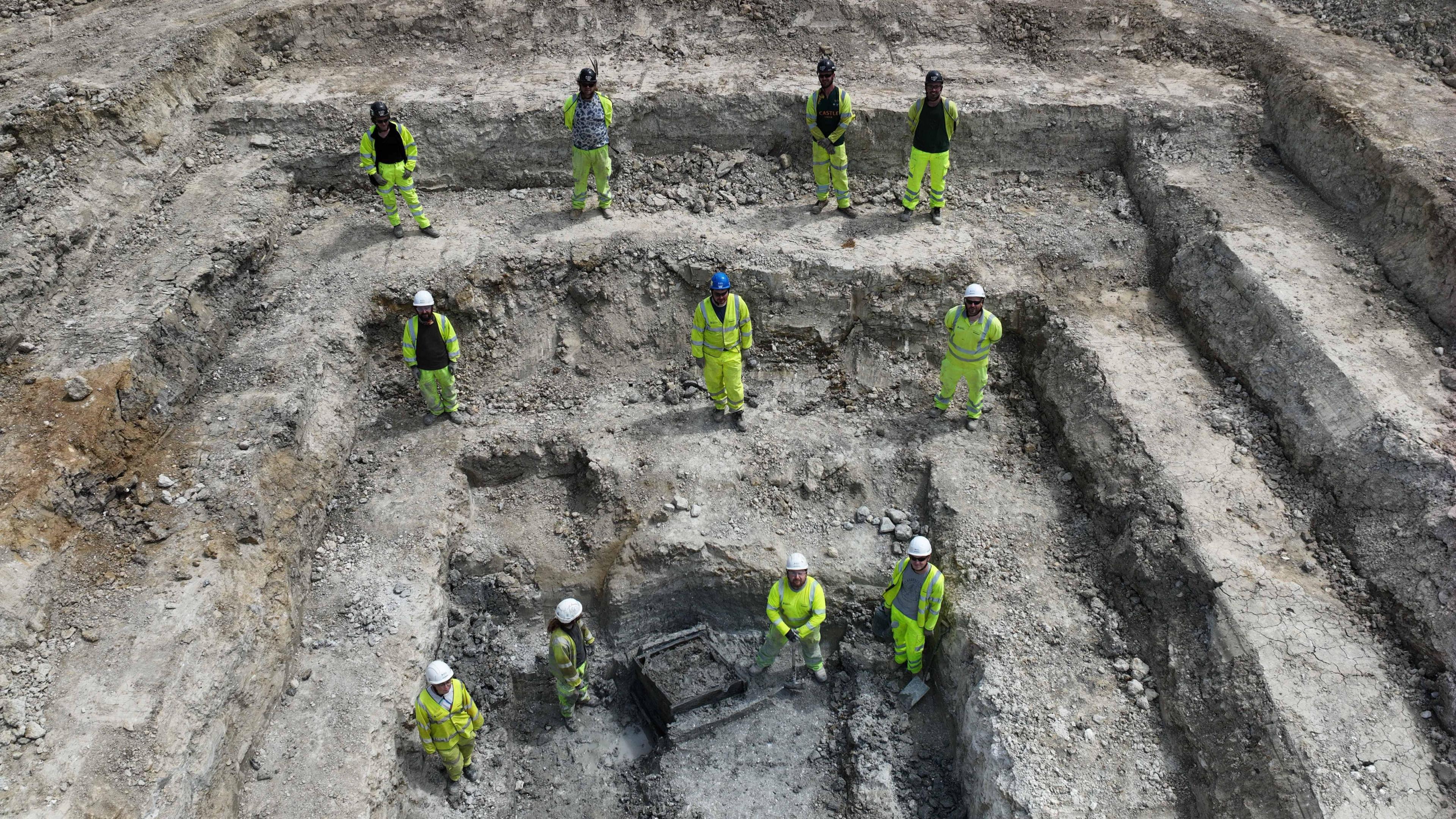
A team of archaeologists worked on the well at the site
To provide water for the activities, the settlers dug the first well, which was about 8.5 metres (28ft) deep - about as deep as the average modern two-storey house is high.
Although a serious piece of Roman engineering and human endeavour, Mr Markus explained that not everything went to plan.
"Despite containing the remains of a wooden ladder, this first well collapsed before they could use it," he said.
"As we discovered when we first started our excavations here, the clay literally peels away from the more compacted earth and stone.
"We’ve all done a bit of DIY that hasn’t quite gone to plan, but this was a failure of Roman engineering on an industrial scale.
"A lot of effort would have gone into digging this well which they then had to completely abandon."
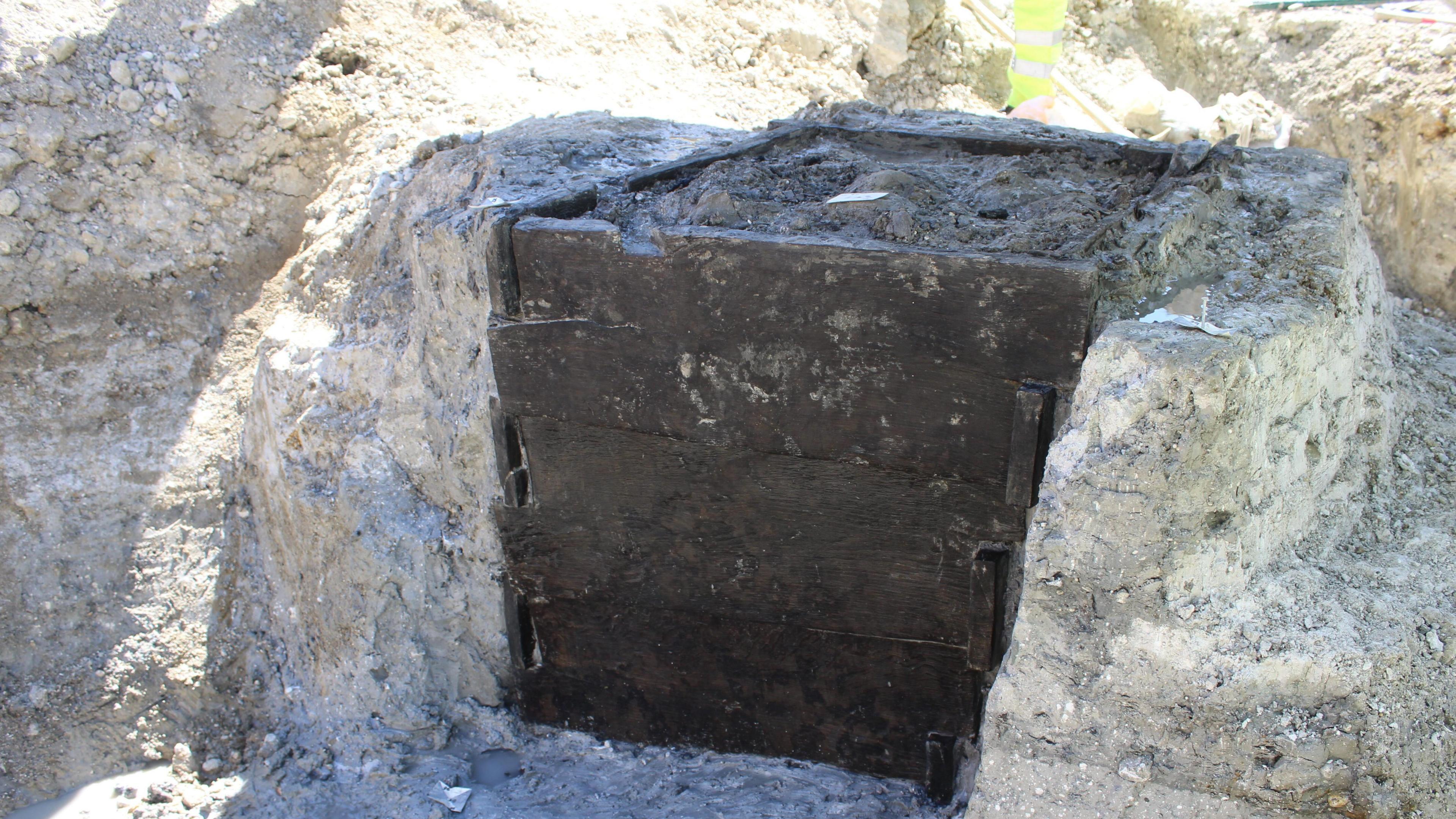
A second well was lined with wooden boards to support the structure and stop it caving in
To prevent a second collapse, the next well was lined with wooden boards to support the structure and stop it caving in.
It was also slightly smaller at 6.5m (19.5ft) deep.
Mr Markus said: "We can sympathise with the original well diggers because excavating these required as much careful design and effort as building them."
They found stone cobbles at the base to filter the water and sawn-off branches, woodchips, and off-cuts of planks, dumped by the Romano-British carpenters, after the well went out of use.
The contents of the well, including some decorative wood, will now be studied by specialists.
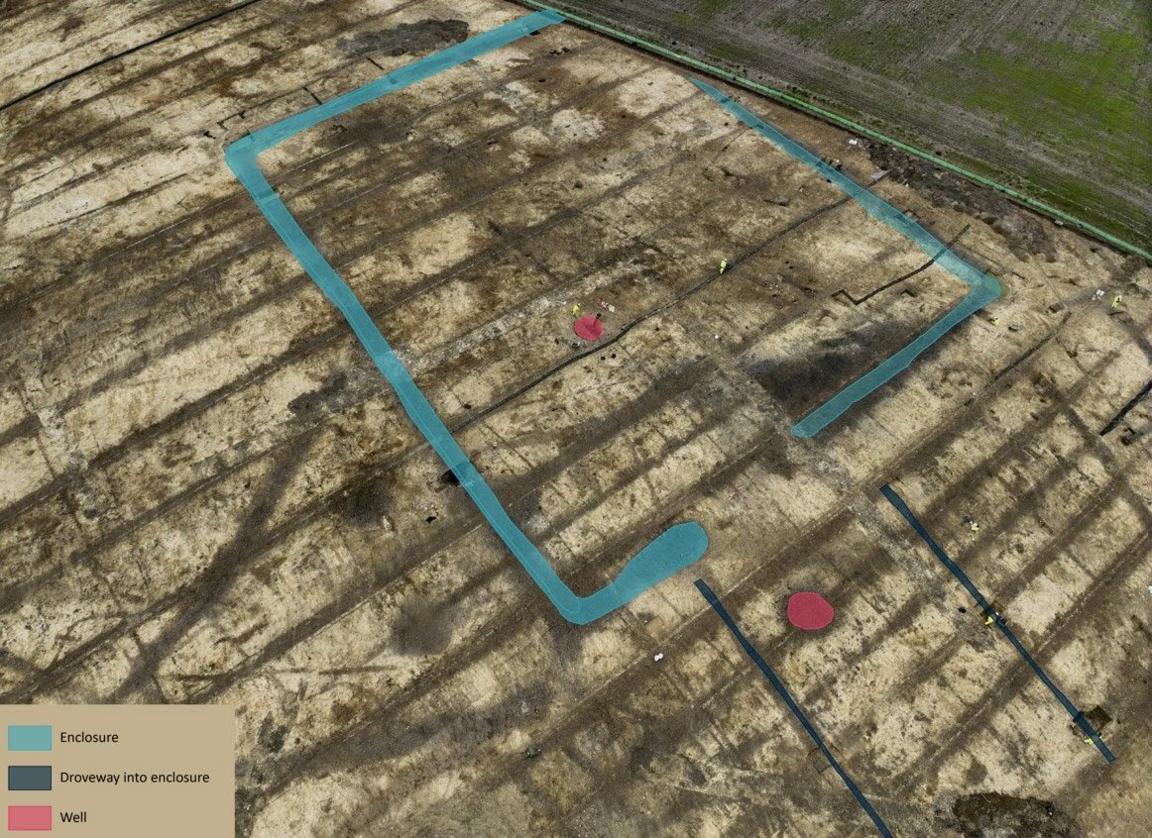
The site plan shows the locations of the two wells - one inside and one outside the enclosure
The archaeologists have found evidence suggesting the workshop was part of a wider trade network.
At the very south of the site, the team has identified a likely Roman road which could have connected the site with major Roman routes, so they could have supplied large settlements such as Godmanchester.
Gareth Moores, the A428 Black Cat to Caxton Gibbet programme manager, said: "This archaeological work has been a fascinating and integral part of the A428 improvements.
"Without this major road scheme, these invaluable discoveries about Roman engineering and daily life might have remained hidden forever."
Roadworks dig reveals Roman ‘failure’
- Attribution
Get in touch
Do you have a story suggestion for Cambridgeshire?
Follow Cambridgeshire news on BBC Sounds, Facebook, external, Instagram, external and X, external.
Related topics
- Published11 August 2024

- Published18 July 2023

- Published12 December 2023
